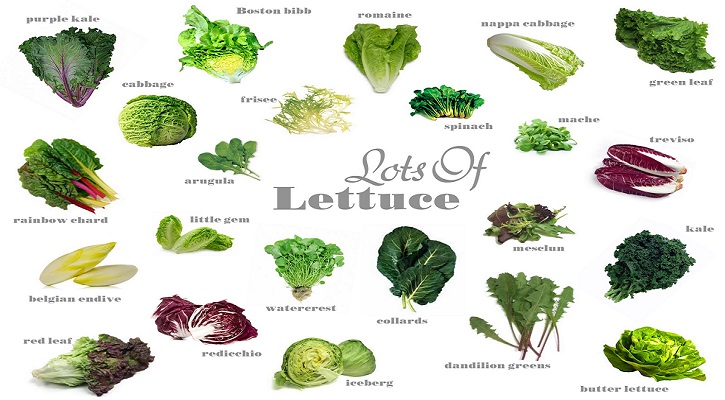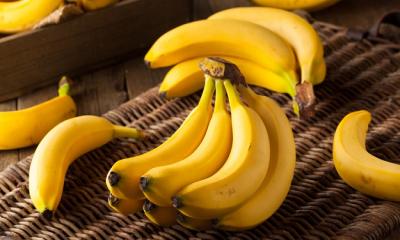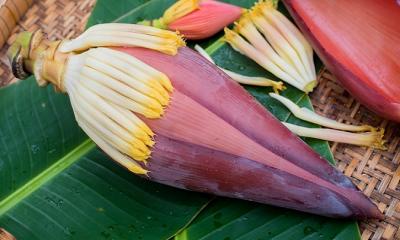
29 of the best lettuce varieties for your garden ( Part -1)
- Kristina Hicks-Hamblin
- July 31, 2022
Lettuce comes in a range of varieties – with flavors from buttery and mild to nutty and even slightly bitter; textures from delicate to crunchy; and colors from pale to dark green and burgundy. With all these choices, even the most ardent veggie-phobes or demanding foodies will find lettuce to love. Most of the leafy greens we put in our salad bowls are varieties of Latuca sativa.
Have you ever noticed what the flowers look like when your lettuce goes to seed? They might remind you of ornamental asters and for good reason, as these plants are members of the Asteraceae or aster family.
The cultivars of this species all tend to have fairly mild, sweet flavors, and textures that vary from crisp and succulent to delicate and tender. Their leaves come in different shapes, colors, and sizes – and their flowers are yellow or white, like those of their closest wild relative, L. serriola. Let’s take a tour of some of the best varieties of lettuce. I’ve included some popular choices for you to choose from, as well as some lesser-known cultivars.
Here 29 of the Best Lettuce Varieties for Your Garden:
- Crisphead
- Crisphead Great Lakes
- Hanson Improved
- Igloo
- Webbs Wonderful
- Butterhead
- Bibb
- Bronze Mignonette
- Buttercrunch
- Dynamite
- Four Seasons
Read More: Why do American’s call them “french” fries?
- Tom Thumb
- Yugoslavian Red
- Romaine
- Cimarron
- EZ Serve
- Forellenschluss
- Little Caesar
- Little Gem
- Parris Island
- Paris White
- Vivian
- Loose Leaf
- Black Seeded Simpson
- Deer Tongue
- Grand Rapids
- Green Ice
- Lollo Rosso
- Prizehead
- Red Sails
- Ruby
- Oak Leaf
- Bronze Guard
- Oakleaf
Read More: Why you should eat Greek yogurt for your breakfast?
Crisphead: Let’s start off with a type of L. sativa called crisphead, also known as head or heading lettuce. Does this sound exotic and interesting? Brace yourself. I’m talking about the category that includes good old iceberg. Crisphead varieties like iceberg may be fairly subtle taste-wise but boy do they have amazing texture, particularly when shredded. As their name suggests, crispheads are crunchy and crisp and since they are full of water, they are wonderfully refreshing during the sweltering days of summer. While they are generally mild tasting, some varieties have more of a sweet flavor.
Consider for a moment that perhaps this lettuce would be a great team player in meals where its crisp texture can really shine. The leaves of these plants grow in heads compact round balls that keep the inner leaves pale and sparkling clean, making kitchen prep easier than it can sometimes be with homegrown loose leaf cultivars. And when you pick a crisphead variety to grow in the backyard, you have a number of choices.
‘Iceberg’ is sometimes pooh-poohed for its low nutritional value, but red crisphead varieties will bring a bit of added nutrition along with their crunch. The red compounds in vegetables such as red crispheads contain anthocyanins, which have multiple health benefits according to studies such as this one in Food and Nutrition Research by H. E. Khoo and fellow authors. Red cultivars can be a little harder to find, but heat resistant varieties are widely available. Here are some of my favorites:
1. Crisphead Great Lakes : First introduced in 1941 by the USDA and the Michigan Agriculture Experiment Station, ‘Crisphead Great Lakes’ was an All-America Selections winner in 1944. This green cultivar is heat resistant, bolt resistant, and is mature and ready to harvest in 80-90 days. This variety produces dense 8- to 12-inch heads with serrated outer leaves and a tight, crunchy heart.
Read More: Why you should drink coffee?
2. Hanson Improved: Maturing in 75-85 days, ‘Hanson Improved’ thrives in full sun and partial shade. With green, curly leaves on the outside and a crisp white heart, this variety is also known as ‘Ewing’s Excelsior,’ ‘Gardener’s Favorite,’ and ‘King of the Market.’ One of the more heat-tolerant varieties, the leaves and heart have a mild and sweet flavor. This heirloom variety originates from Maryland, where it was first grown by the Hanson family. In 1871, Henry A. Dreer, a seed purveyor from Philadelphia, brought it to market with the name ‘Hanson.’
3. Igloo: Another green variety, ‘Igloo,’ with its lightly serrated leaves, is quick to mature in only 70 days. It’s heat resistant, thriving even in the warmer months. ‘Igloo’ has a mild flavor, a crisp crunch, and a mature head size of 8-12 inches.
4. Webbs Wonderful: An heirloom variety originating in England, ‘Webbs Wonderful’ is heat resistant, and produces firm, sweet-tasting heads of 7-11 inches in diameter. The outer leaves are softly crumpled, surrounding a crisp, pale green heart. Slow to bolt and heat-resistant, ‘Webbs Wonderful’ matures in 72 days. This variety was introduced in 1890 by Clarence Webb, an English horticulturalist.
Butterhead: Sometimes in life things are named perfectly, and I feel that butterhead is one such example. Butterheads don’t just have a soft, buttery texture they also have a creamy, buttery taste. If you happen to know a veggie-phobe, you should try sneaking some butterhead onto their plate. Butterheads have none of the strong, bitter, or pungent tastes that put some people off of eating fresh, healthy greens, and their leaves are soft and tender.
And recipes such as this one from Foodal combine this type of lettuce with mellow and fruity ingredients – avocado and mango, in this case for a salad that tastes truly decadent.
The broad, tender leaves of butterheads form a loose head, making it easy to harvest leaves as needed in the garden, cut-and-come-again style. Or, wait until maturity and pick the whole thing. Also known as Bibb or Boston lettuce, butterheads (L. sativa var. capitata) come in a selection of green and red shades, and most varieties are moderately heat tolerant.
Read More: What you should know about cappuccino?
5. Bibb: Probably one of the best-known varieties of butterhead lettuce, ‘Bibb’ is named after John B. Bibb, an army officer during the War of 1812. Originally called “limestone lettuce” it was first introduced to the market by Grenewein Greenhouse in Louisville in the 1920s. With its abundance of soft green leaves and a tender pale center, this variety matures in 55-60 days, and outer leaves can be harvested earlier in a
cut-and-come-again style. The 8- to 10-inch lightly ruffled leaves form a rosette shape, and are tender and delicate with a mild flavor. ‘Bibb’ prefers a full sun location and is somewhat heat tolerant.
6. Bronze Mignonette: Add some color to your salad with ‘Bronze Mignonette.’ With its soft green leaves tinted with bronze, this heirloom variety was first introduced by the Iowa Seed Company in 1896. Slow to bolt, this heat-tolerant cultivar matures in 65-70 days, with 8- to 10-inch heads and crisp, slightly crumpled leaves. ‘Bronze Mignonette’ prefers a full sun location and will tolerate a light frost.
7. Buttercrunch: Tender, crisp, and delicious, award-winning ‘Buttercrunch’ has rich green leaves that are often tinged with red, which form a rosette shape around a loose head. Bolt- and heat-resistant, this easy-to-grow variety prefers full sun but will tolerate partial shade, particularly in warmer climates. Maturing in 65 days, with 6- to 8-inch heads, you can harvest outer leaves early as a cut-and-come-again crop, should you wish to. An All-America Selections Winner in the edible vegetable category in 1963, ‘Buttercrunch’ was first introduced by Cornell University.
Read More: Caffeine Levels of Starbucks` Coffee Drinks
8. Dynamite: This hybrid cultivar is notable for being resistant to aphids, lettuce mosaic virus, and water mold. Soft, overlapping, crumpled leaves form a dense, rounded shape. Maturing in 65-75 days, you can harvest 8 to 10-inch heads with a sweet flavor and crisp, yet delicate texture. Alternatively, start harvesting outer leaves after 40-50 days. Not as heat tolerant as some of the other varieties described above, it’s best planted in a full sun location in fall or early spring.
9. Four Seasons: Also known as ‘Marvel of Four Seasons,’ this French heirloom butterhead variety is especially cold tolerant. Leaves range in color from bronze to red and pale green, and form an attractive rosette shape. Ideal for late season harvests of tender, crinkled, sweet-tasting leaves, ‘Four Seasons’ matures in 55 days. Disliking the heat, it has a tendency to bolt in warmer weather.
10. Tom Thumb: With diminutive 3- to 5-inch heads, the English variety ‘Tom Thumb’ is ideal for smaller gardens or container growing. Soft, green, crinkled leaves form compact heads in just 50-60 days. With a crisp but tender texture and mild, slightly nutty flavor, mature ‘Tom Thumb’ heads are the perfect size to make a delicious side salad for two people.
Tolerant of light frosts, this variety enjoys a full sun location. ‘Tom Thumb’ is one of the oldest US cultivars still commonly available on the market today. It was described and depicted in the French seed company Vilmorin-Andrieux’s illustrated book “The Vegetable Garden,” which was first translated to English in 1885.
11. Yugoslavian Red: If you want your lettuce to look beautiful and taste great, try ‘Yugoslavian Red.’ Ready to harvest after only 55 days, you’ll love the bright green leaves that are dappled with burgundy, surrounding a yellowish-green center. An heirloom variety hailing from the country formerly known as Yugoslavia, this cultivar was introduced to the US in 1987 by the Southern Exposure Seed Exchange.
The loose, rounded heads mature to be 10-12 inches in diameter, and the outer leaves can be harvested earlier in the season as a cut-and-come-again crop. Happier in cooler temperatures, ‘Yugoslavian Red’ has a tendency to bolt when the mercury rises.
Read More: Health Benefits of Napa Cabbage
Romaine: As the star of the Caesar salad, romaine (L. sativa var. longifolia) is a familiar sight in the lettuce world. Also known as “cos,” this long leaved salad green is crisp and crunchy, and usually has a mild, or just slightly bitter taste. In general, romaine cultivars are among the most heat tolerant lettuce varieties.
Romaine can be found in varieties that are green, red, bronze, or speckled. It’s fairly easy to find romaine in the supermarket but usually only the green variety. If you grow your own, you can put a colorful spin on those Caesar salads.
Continue reading...








